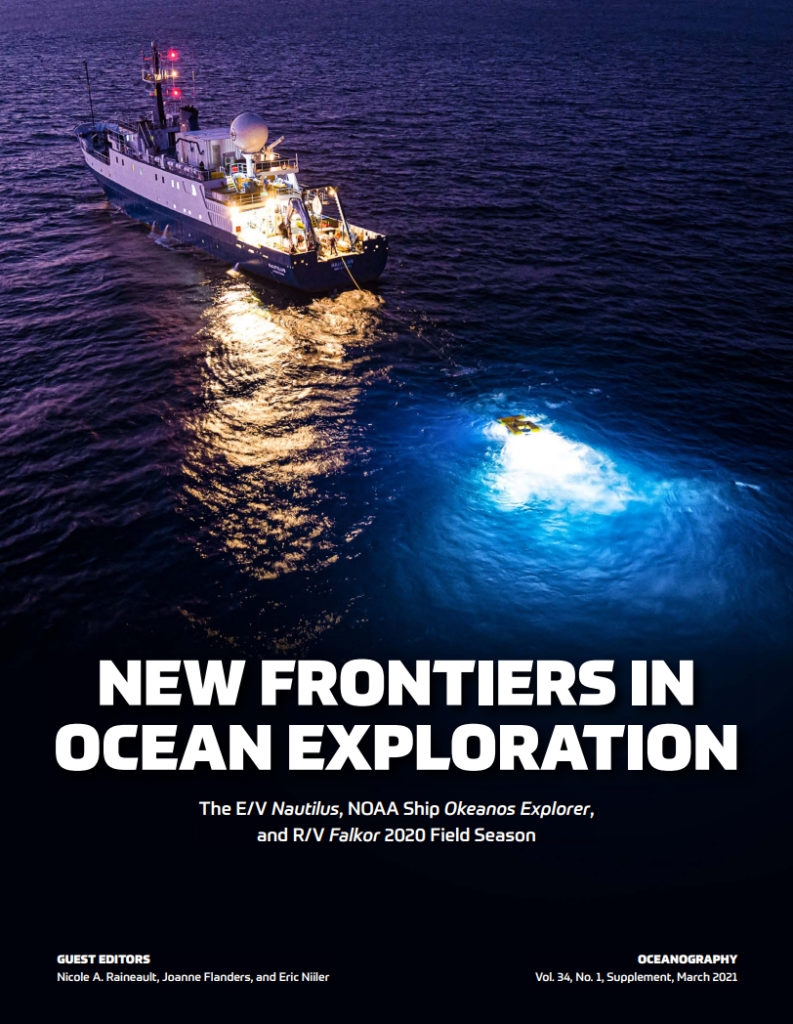
Findings from Monterey Bay National Marine Sanctuary’s third research expedition aboard the Exploration Vessel Nautilus, in October 2020, were published in the 34th edition of “Oceanography.”
Highlights of the report including a 22-hour dive near the seamount that surveyed extensive aggregations of brooding octopus at the top of a small volcanic cone and then transited 2 km to revisit the whale fall. During 10 hours of video footage, we surveyed approximately 15 acres of seafloor and counted 3,647 octopus, of which 2,938 (81%) were brooding mothers. Visual inspection of several egg masses confirmed embryonic development, and several hatching events were observed. The temperature of seeping water was elevated, up to 9.4°C, with corresponding lower dissolved oxygen levels. The whale fall was more decomposed than we expected, but flourishing populations of Osedax and ampheretid worms were still present (Figure 4). Whale bones, Osedax, baleen, worms, sediment, in situ seawater, and other samples were collected. Video orbits made around the whale fall will be used to construct a three-dimensional model for comparison with the one generated in 2019.
Additional surveys were conducted south of Davidson Seamount. Greater Farallones National Marine Sanctuary also participated in this cruise, and their work in Pioneer Canyon is also featured in this publication.
You can download the issue here. The specific article is titled, “Exploring Monterey Bay National Marine Sanctuary,” and can be found on page 34.